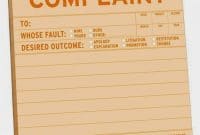Salam semangat di hari ini semoga bisa mengobarkan daya juang buat kalian yang sedang menyelesaikan tugas-tugas akhir masa studi. Dalam hubungannya dengan artikel sebelumnya yang sudah mengupas tentang abstract, introduction, dan method maka tiba giliran hasil dan pembahasan atau yang sering kita sebut dengan result and discussion. Pada tahapan ini, penulis diminta untuk memaparkan hasil penelitian yang dilakukan sebelumnya, serta membahasnya secara rinci sehingga pembaca mendapat gambaran yang jelas tentang fenomena apa yang dirumuskan penulis setelah melakukan penelitiannya. Tambahan pula, pada bab ini, penulis juga harus mampu menghubungkan hasil temuannya dengan teori-teori yang ada baik itu sebagai pendukung temuan maupun sebagai teori yang disangkal oleh temuan penelitian yang sudah dilakukan. Contohnya seperti dipaparkan di bawah ini.
Artikel Bahasa Inggris tentang ERRORS ANALYSIS (results and discussion)
RESULTS AND DISCUSSION
The research had been done on Friday, August 3rd 2012 for XI.A.1 of MAN 1 (Model) Bandar Lampung. It required 90 minutes to administrate the students’ descriptive text writing.Based on the data that had been investigated concerning to the correct use of simple present tense, it was found that most students were able to use simple present tense in their descriptive text writing. It can be seen in the table below:
| Number of Students | Total Simple Present Tense | The Correct Use of Simple Present Tense | The Grammatical Errors of Using Simple Present Tense |
| 30 | 420 | 310 | 110 |
| Percentage | 73.81% | 26.19% | |
From the data above we can see that the percentage of the correct use of simple present tense was 73.81%, whereas the grammatical error in using simple present tense was 26.19%. It meant that most students were able to use simple present tense in writing their descriptive text. They had understood well how to use the form of simple present tense in composing descriptive text, it can be seen in appendix 1. Most of the students were able to add –s or –es in the verb when the subject was in the form of third person singular. The students also had understood when they should use to be in the sentence and when they should not use it.
Based on the result of the research, it was found that most students of X1.A.1 MAN 1 (Model) Bandar Lampung have used simple present tense correctly in descriptive text. It can be seen from the data taken during the research, that it showed the correct use of simple present tense was 73.81%, whereas the errors in using simple present tense was 26.19%. It meant that there was more correct use than error use of simple present tense in students’ descriptive text writing. Actually there were 420 simple present tenses with the correct use were 310 items and there were 110 errors in using simple present tense. It meant that the students have understood well how to use simple present tense in their descriptive text writing by following the form of simple present tense that had been given by the teacher.
The students also understood when they were using nominal (non-verbal) tense, they must add linking verb (in this case the linking verbs that usually used was be: am, is, are) since in nominal present tense there is no verbs in it, therefore it must be added by linking verb in order to make a complete sentence. For, a complete sentence has at least one subject and one verb.For example: He is kind-hearted man in my life. He is tall and handsome. He has a pointed nose, and white skin. Syifais my lovely sister.
Furthermore, The students also could differentiate between plural and singular form, they used to be is when the noun that the students explained were in the singular form and they used to be are when the noun that the students explained were in the plural. For examples; Harry’s hobbies are swimming and playing football. Her hobby is cooking.
Even though the students of XI.A.1 were able to apply simple present tense in their writing descriptive text, they also committed to do some grammatical errors in their writing. To identify the errors, the researcher classified the errors of using simple present tense in students’ descriptive text writing by using surface strategy taxonomy. To make it clear, the data gathered is shown in the table below.
Frequency of Grammatical Errors based on the Theory of Surface Strategy Taxonomy
| No. | Errors Based on Surface Strategy Taxonomy | Total Errors | Percentage (%) |
| 1 | Omission | 56 | 50.90% |
| 2 | Addition | 6 | 5.45% |
| 3 | Misformation | 39 | 35.46% |
| 4 | Misordering | 9 | 8.18% |
| Total | 110 | 100% | |
Based on the result of the research, it was noticed that the highest frequency of errors made by the students based on surface strategy taxonomy was omission error 56 items (50.90%). Omission is characterized by the absence of an item that must appear in well-formed utterances. In this stage, the students made a lot of errors in using -s or -eswhen the subject of the sentence was in the form of the third person singular. Actually the ending -s or -esshould appear in the verb when the subject was the third person singular. For example; she always make me proud of her, He always spend his holiday with our family, etc.The students also omitted be when there was no verb in the sentence, it was called nominal present tense (nonverbal). For example: My father very kind to me, his eyes very circle, etc.
Furthermore, misformation with the total errors was 39 items (35.46%), it was the most frequent error in using simple present tense after omission. Misformation is characterized by the use of wrong form of morpheme or the morpheme of the structure. In this case, the students made errors because they did not master simple present tense in well-formed. It can be proved from the examples; we often played in the square football together, because I and Handy’s hobby is played football, she always to prepare breakfast for us, her hobby is reading, swimming, listening to the music, playing games in computer, watching movies, studying, and playing basket ball, etc.
The appearance of disordering error there were 9 items (8.18%), was less than misformation. As we know that disordering is characterized by the incorrect placement of a morpheme or group of morphemes in an utterance. In this case the students who did this error only happened to the seven students. The students still committed misordering errors because they might be influenced by Indonesian structure where they placed the morpheme based on the order of Indonesian structure. For example, the student wrote I very love him because he is my only one little brother.
The least frequent errors that students made were addition, which were 6 items (5.45%). It only happened to the five students in the class (see appendix 4). As we know that addition is characterized by the presence of an item which must not appear in a well-formed utterances. In this case, the students added to be in their sentences when it had been there the verb in it. For instance,He is usually becomes a keeper, because he is fat.
From the research finding, although the students of X1.A.1 used more correct simple present tense than error in their descriptive text, the errors that were made by the students should be clarified in order to know what the common error made by the students.
Originally posted 2024-05-09 15:17:51.




